
Royal Academy, London
From a cut-out dove Picasso made aged eight to the sketches that led to Guernica, this spectacular show displays a relentless creativity on any paper that came to hand
Adrian Searle
The Guardian
Monday 20 January 2020
Wherever he went, whatever he did, Picasso left a paper trail of sketchbooks, studies, oils and gouaches, pencil and ink, crayon and charcoal drawings, prints (woodcuts and linocuts, lithographs, etchings, engravings) and other works on laid and wove papers, Japanese papers, watermarked Arches paper, embossed papers, newspaper, wallpaper, hotel headed notepaper, menu cards, wrapping paper, napkins and any old scraps and bits of card that came to hand. He accumulated paper, squirrelled it away, and never threw anything out. He was a hoarder.
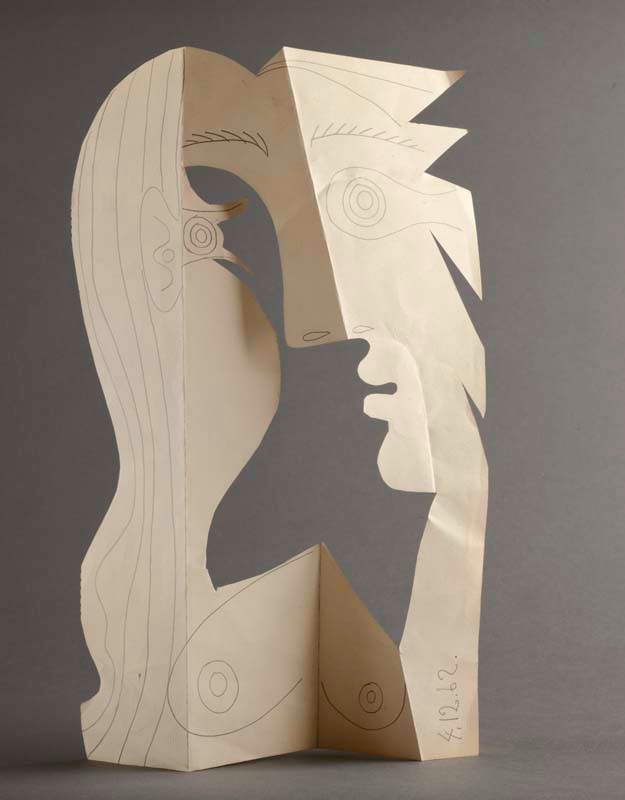
Head of a Woman, 1962Wherever he went, whatever he did, Picasso left a paper trail of sketchbooks, studies, oils and gouaches, pencil and ink, crayon and charcoal drawings, prints (woodcuts and linocuts, lithographs, etchings, engravings) and other works on laid and wove papers, Japanese papers, watermarked Arches paper, embossed papers, newspaper, wallpaper, hotel headed notepaper, menu cards, wrapping paper, napkins and any old scraps and bits of card that came to hand. He accumulated paper, squirrelled it away, and never threw anything out. He was a hoarder.

Every kind of paper has its qualities – even the most disposable, or the nastiest wallpaper pattern. All of which Picasso was alert to, a connoisseur of the cheap and mass produced as well as the handmade and the specialised, as he folded, glued together, cut and tore, basted in ink and washes, drew on and rubbed into. Paper for him was a medium (just as was paint, clay or plaster) to be manipulated. And as he worked he was always finding, losing and refinding his subjects, whether it was a fish or a faun, a woman or a guitar, a portrait or a skull. The multiple transformations he performed in his art evidence his unnerving vitality, his recklessness and confidence, his altogether too-muchness.
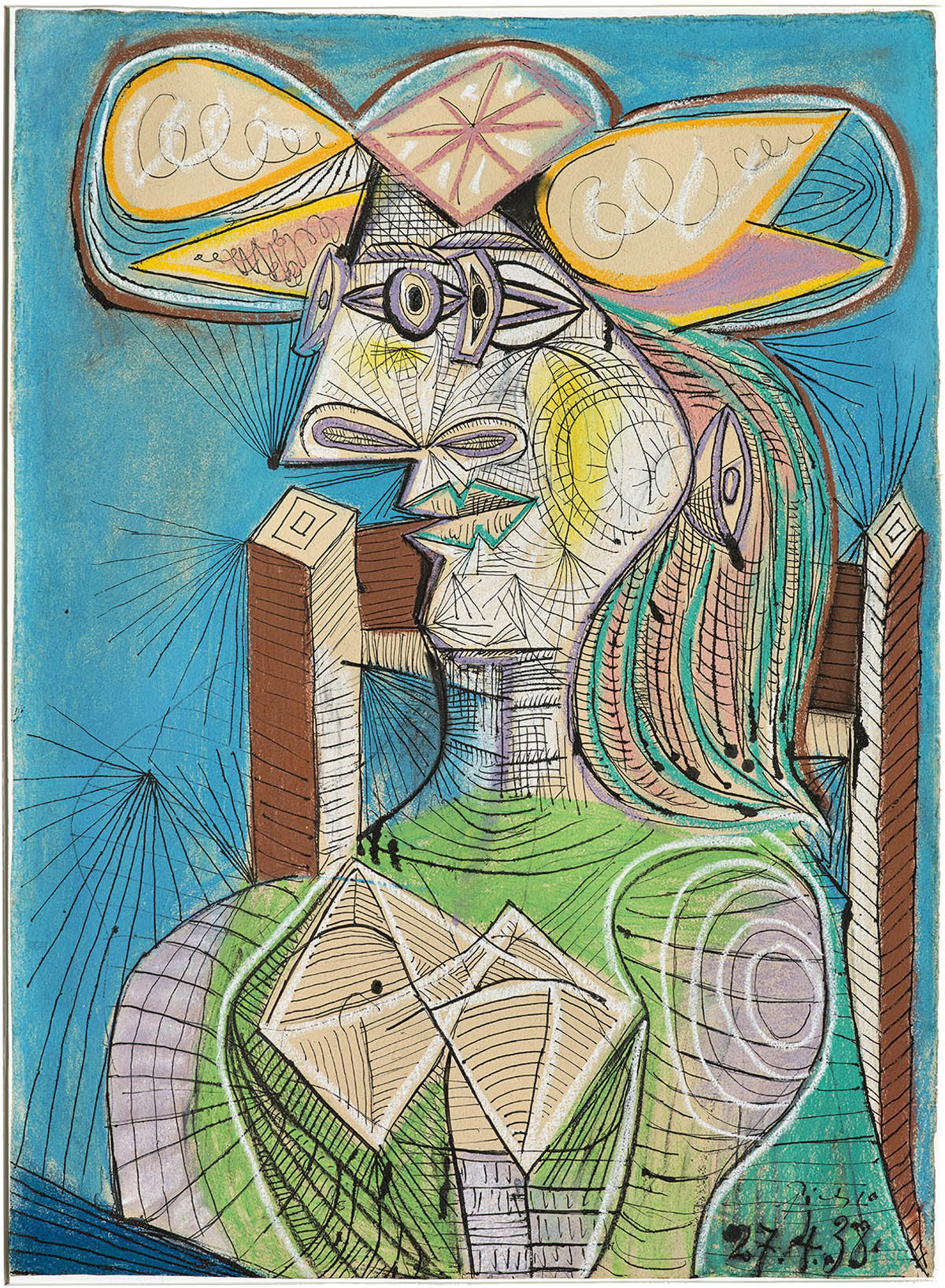
Seated Woman (Dora), 1938
Picasso and sculpture, Picasso and photography, Picasso and the theatre, Picasso and ceramics, Picasso and Matisse, Picasso’s Picassos … is there no end to the ways in which the artist has been re-examined, in exhibition after exhibition, study after study, both during his long career and even more since his death aged 91, in 1973? And let’s not forget the biopics, the Guernica souvenir key-rings or the car that bears his name. You might imagine that the artist would be buried under all that evaluation, all that adulation, all those analyses, not just of his work but also of his personal life, all those relationships, all that cruelty and monstrousness and machismo and all the ephemeral junk, never mind all that art. And now Picasso and Paper, filling the Royal Academy galleries.
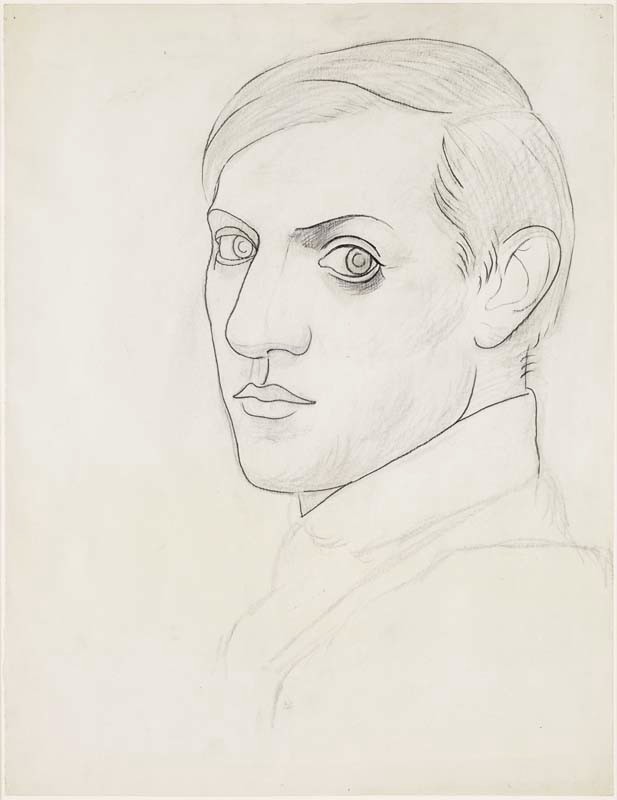
All that said, there is always more to be said, so much to look at. What this exhibition provides is but one more overview, whose backbone is his entire career, a rehearsal of movements and moments that takes us from his very earliest cut-out paper figures of a characterful, squat little terrier and a dove, made when he was eight or nine, to a skull-like self-portrait, drawn the year before he died. Hanging alone on a white wall, an urgent hurry of black-and-white crayon, it looks back at us at us and everything we’ve encountered through room after room, filled with both major and minor developments in his art.
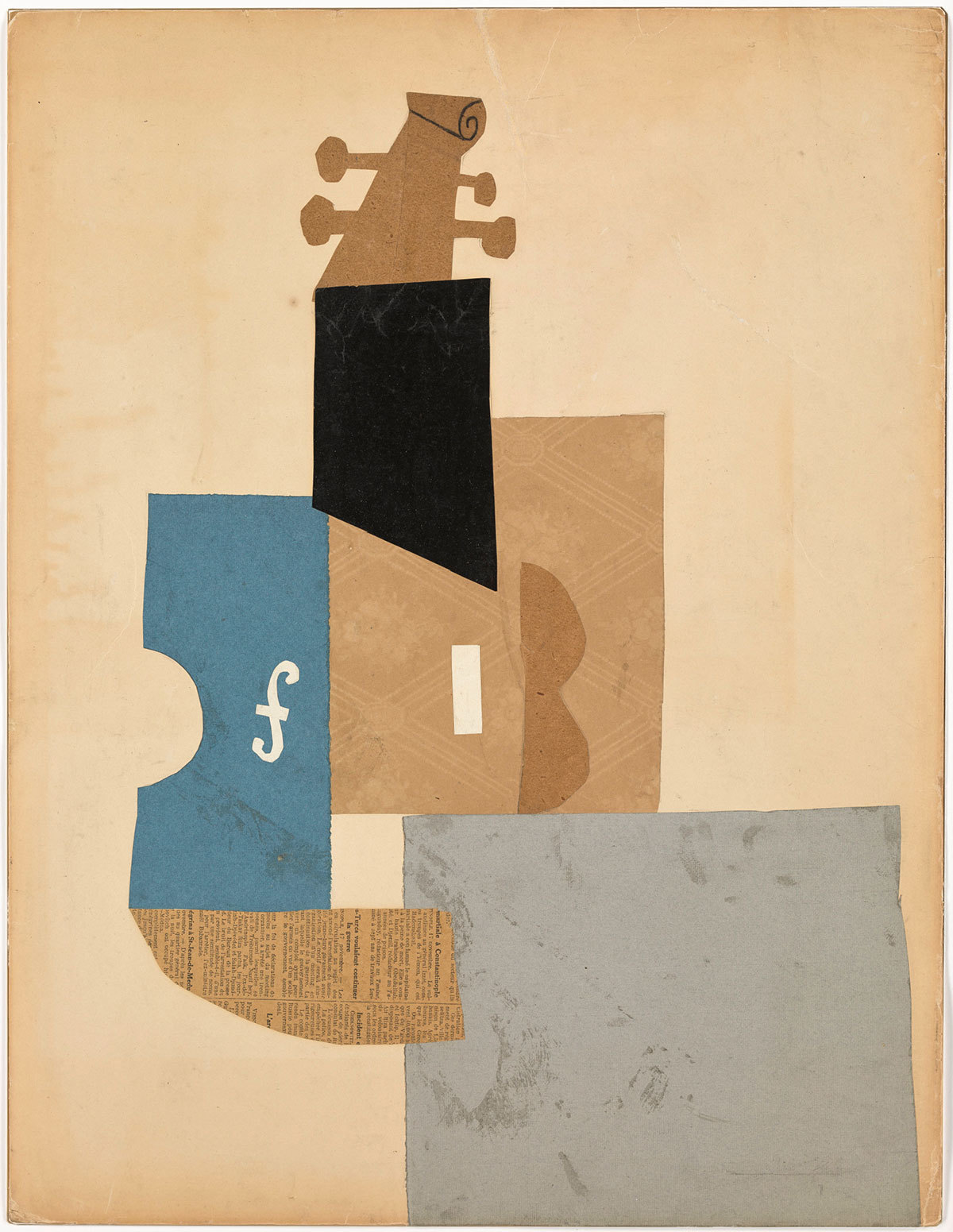
Violin, Paris, 1912
Somewhere along the way those earliest, cut-out little creatures return, in scissored paper shapes cut by an adult: a cuttlefish, a feather, light bulbs and a fishing float, and nasty little paper faces and skulls whose eyes and mouths have been burned through the paper, most likely with the tip of a lighted cigarette. He made these last, gruesome shreds in Paris in 1942. They stop me short, a sort of human litter, a deathly confetti.
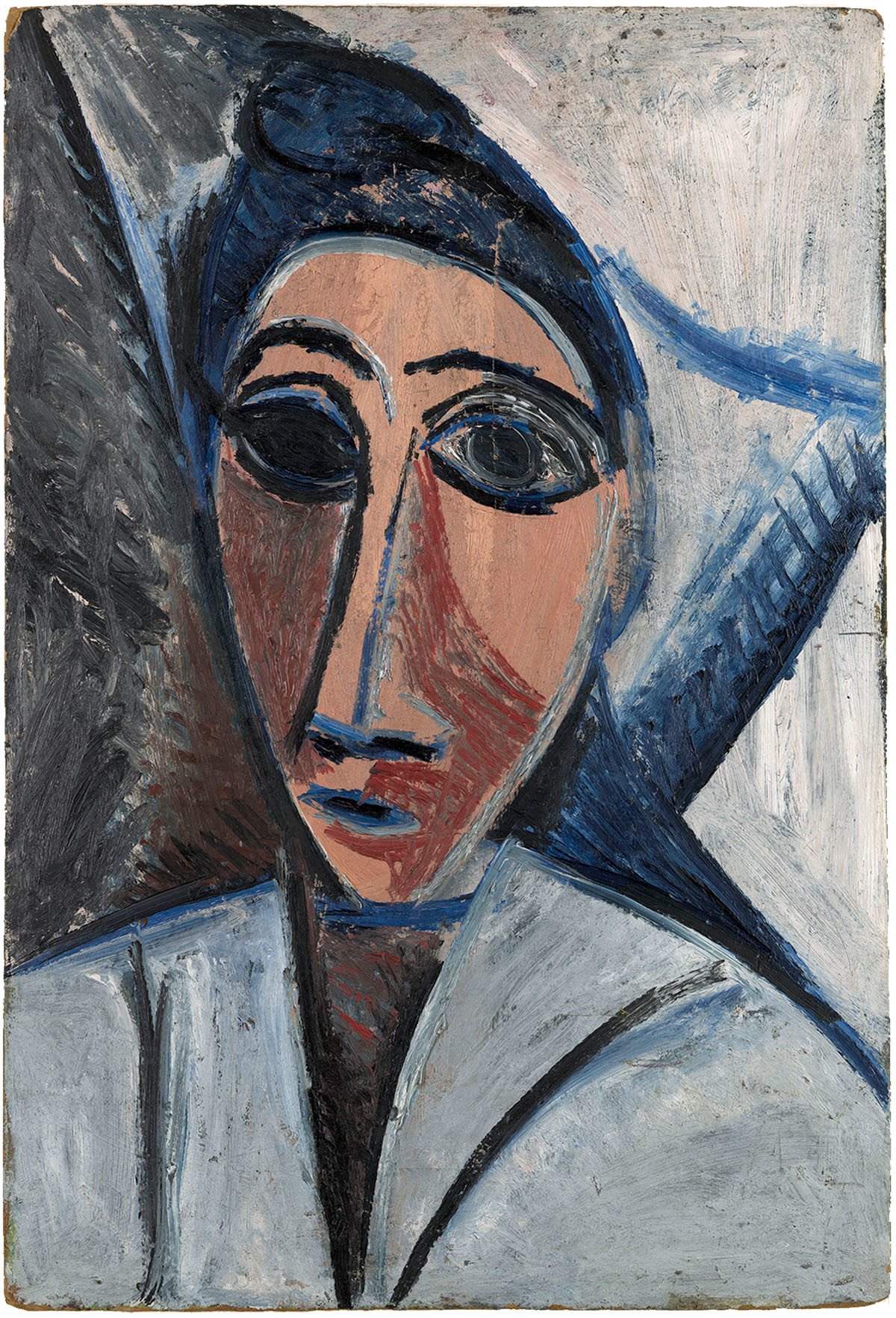
Bust of Woman or Sailor (Study for 'Les Demoiselles d’Avignon'), 1907
The variety of the works here, their registers and application, range through all the periods of Picasso’s development. Each section of the show is accompanied by key paintings and sculptures of their times. A life-sized reproduction Les Demoiselles d’Avignon takes the place of the real thing, while the scale of Guernica (itself a kind of drawing as much as it is a painting) is indicated by Dora Maar’s series of black-and-white photographs of the painting in progress, wedged at an angle in the big loft space where Picasso painted it. Picasso filled 16 notebooks, as well as making innumerable individual studies, in his preparation of Les Demoiselles, and Guernica was subject to almost as much preparation and revision. We are apt to forget how much thinking went on in the lead up to many of his paintings and sculptures.

Study for the Horse Head (I). Sketch for ‘Guernica’, 1937
He took his own photographs too, notably here of the huddled buildings on the lower river Ebro, one of the formative places where he began to develop the idea of cubism. As much as cubism is rich with the atmosphere of Paris bars, a glass of wine and the newspaper and the urban everyday, it was also the product of the tightly packed jumbled buildings in Horta de Ebro, in Cadaqués and the high Pyrenean village of Gósol. Cubism was also an art of collage and bricolage, the found and the invented coming together.
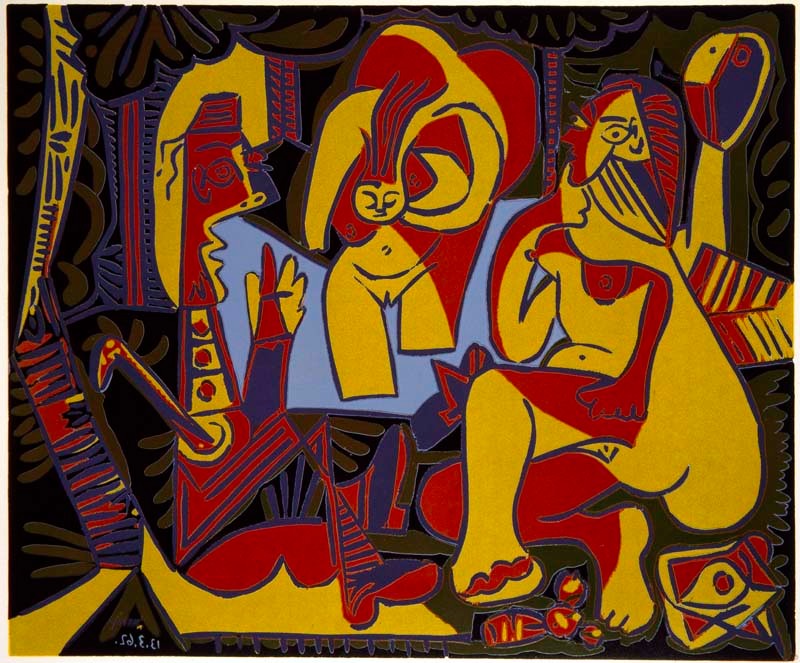
While each section of the exhibition alights on a major theme – cubism and neo-classicism and surrealism, with Picasso’s relationship with Marie-Thérèse Walter, the war years and his later re-engagement with Manet and Delacroix – the pleasures of the exhibition are in individual works, in all their variety of touches and tempos. The wonderful tiny card and string guitars, delicate confections made with twine and card sewn on to a discarded pharmaceutical packet, those little cut-outs, drawings of mad faces, a plaster cast of a crumpled sheet of paper, like a gigantic mollusc or a loaf, the overdrawings he did on Vogue fashion spreads and pin-up shots, cartoonish figures and the closely observed all come together here; it is clear that drawing and its manipulations of edges and spaces, volume and flatness is at the heart of everything for Picasso. Even his poems are drawn as much as written. He couldn’t seem to stop himself.
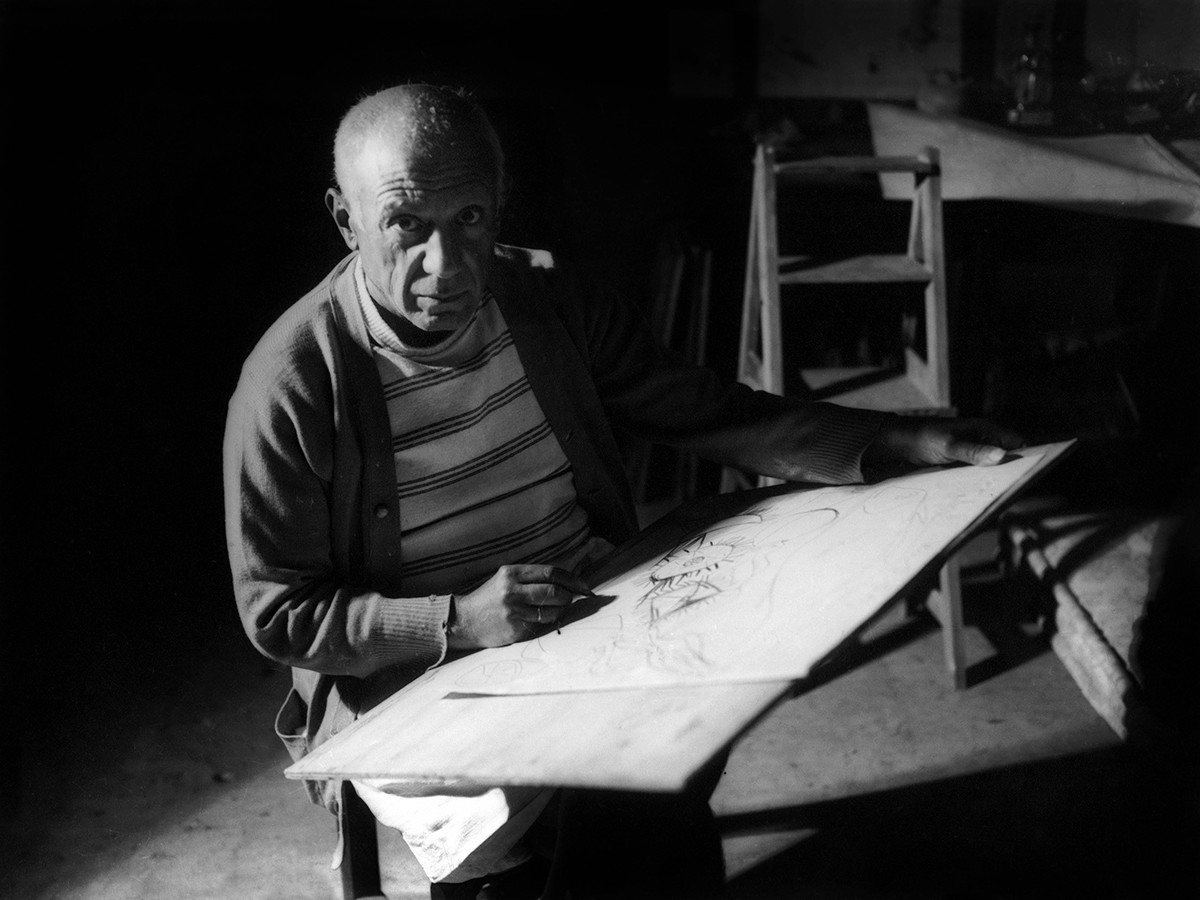
Pablo Picasso drawing in Antibes, 1946 (by Michael Sima)
There is a story that once, in a cafe in the south of France, the patron asked if Picasso might do a little doodle, on a paper tablecloth or the menu as a memento. The artist shrugged and said he’d just like to pay for the meal – he didn’t want to buy the restaurant.
Picasso and Paper is at the Royal Academy, London, 25 January to 13 April









No comments:
Post a Comment